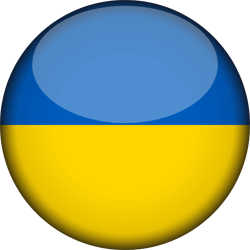Publications
Uncategorized
Publications
-
EuroFIR Standard
Year (2013)
Gurinovic M, Glibetic M, Kadvan A, Milesevic J, Ranic M, Oshaug A, Finglas P (2013) Final report on Balkan Food Platform and recommendations for future integration of WBC/EECA countries. Brussels: EuroFIR AISBL EuroFIR Technical Report 4.6
Slimani N., Crispim S.P., Nicolas G., Casagrande C., Pakkala H., Korousic-Seljak B., and Finglas P.M. (2013) Report on conceptual specifications for the interface between the e- Standardized Methodologies Platform (e-SMP) and the EuroFIR eSearch Platform. EuroFIR NEXUS, D2.5. Read the summary here.
Year (2012)
Møller, A., & Christensen, T. (2012) EuroFIR web services – food data transport package, version 1.4 EuroFIR Technical Report 2.1
Pakkala, H., Martínez de Victoria, I., Christensen, T., Unwin, I., Korhonen, T., Gunnarsson, I., . Presser, K. (2012) EuroFIR web services – specification of request-response message exchange patterns, version 1.2 EuroFIR Technical Report 2.8
Year (2010)
Ireland JD, Møller A (2010) Langual food description: a learning process. European Journal of Clinical Nutrition, 64, Suppl 3, S44-48. (DOI: 1038/ejcn.2010.209)
Kartinen NE, Similä ME, Pakkala H, Korhonen T, Männistö S, Valsta LM (2010) Glycaemic index values in the Finnish food composition database: an approach to standardised value documentation. European Journal of Clinical Nutrition, 64, S68-72. (DOI: 1038/ejcn.2010.214)
Machackova M, Holasova M, Maskova E (2010) Full value documentation in the Czech Food Composition Database. European Journal of Clinical Nutrition, 64, S64-67. (DOI: 1038/ejcn.2010.213
Year (2009)
Weichselbaum E., Benelam B., Soares Costa H. (2009) Traditional foods in Europe, Synthesis report No. 6. – Read the summary of the EuroFIR Synthesis report n°6
Year (2006)
Church S., Gilbert P., Khokhar S. (2006) Ethnic groups and foods in Europe, Synthesis report No. 3.
-
Project Publications
Year (2024)
Mills, E. N. C., Orsenigo, F., Salgado, D., Finglas, P. M., & Astley, S. (2024). Novel strategies for predicting allergenicity: development of a ranking method and screening tools to assess the allergy risk of innovative proteins. EFSA Supporting Publications, 21(6). https://doi.org/10.2903/sp.efsa.2024.en-8840 (EFSA ALLERGENS)
Suckling, J., Morse, S., Murphy, R., et al. (14 more authors) (2024). Environmental life cycle assessment of drink and yoghurt products using non-nutritive sweeteners and sweetness enhancers in place of added sugar: the SWEET project. The International Journal of Life Cycle Assessment. https://doi.org/10.1007/s11367-024-02375-x (SWEET)
Year (2021)
Timotijevic, L., Astley, S., Bogaardt, M. J. et al. (24 more authors) (2021). Designing a research infrastructure (RI) on food behaviour and health: Balancing user needs, business model, governance mechanisms and technology. Trends in Food Science & Technology, 116, 405–414. https://doi.org/10.1016/j.tifs.2021.07.022 (RICHFIELDS)
Year (2020)
Berry, R., Astley, S., Lizano, D. S., Goossens, J. O., & Finglas, P. (2020). Personalised nutrition Quisper and development of a personalised nutrition community. Agro Food Industry Hi Tech, 31(2) (QUISPER)
-
Food Composition Data
Year (2020)
Traka, M. H., Plumb, J., Berry, R., Pinchen, H., & Finglas, P. M. (2020). Maintaining and updating food composition datasets for multiple users and novel technologies: Current challenges from a UK perspective. Nutrition Bulletin, 45(2), 230–240. https://doi.org/10.1111/nbu.12433
Yeah (2019)
Kapsokefalou, M.; Roe, M.; Turrini, A.; Costa, H.S.; Martinez-Victoria, E.; Marletta, L.; Berry, R.; Finglas, P. Food Composition at Present: New Challenges. Nutrients 2019, 11, 1714
Year (2013)
Roe M, Bell s, Oseredczuk M, Christensen T, Westenbrink S, Pakkala H, Presser K, Finglas PM (2013) Updated food composition database for nutrient intake, EFSA supporting publication 2013-EN-355 (https://efsa.onlinelibrary.wiley.com/doi/epdf/10.2903/sp.efsa.2013.EN-355
Year (2012)
Borch Myhre, J., Borgejordet A., Nordbotten A., Loken Bjorge, Arrflot Fargerli R. (2012), Nutritional composition of selected wild and farmed raw fish, Norwegian Food Safety Authority, Oslo.
Møller, A., & Christensen, T. (2012) EuroFIR web services – food data transport package, version 1.4 EuroFIR Technical Report 2.1
Pakkala, H., Martínez de Victoria, I., Christensen, T., Unwin, I., Korhonen, T., Gunnarsson, I., . Presser, K. (2012) EuroFIR web services – specification of request-response message exchange patterns, version 1.2 EuroFIR Technical Report 2.8
Year (2011)
Bell S, Colombani P C, Pakkala H, Christensen T, Møller A, Finglas P M (2011) Food composition data: Identifying new uses, approaching new users. Journal of Food Composition and Analysis (Special Issue 8th International Food Data Conference), (DOI: 1016/j.jfca.2011.03.001)
Bouckaert K P, Slimani N, Nicolas G, Vignat J, Wright A J A, Roe M, Witthöft C M, Finglas P M (2011) Critical evaluation of folate data in European and international databases: recommendations for standardization in international nutritional studies. Molecular Nutrition and Food Research, 55 (1), 166-80. (DOI: 1002/mnfr.201000391)
Year (2010)
Öhrvik V. , Mattisson I. , Wretling S. , Åstrand C ., Potato – analysis of nutrients, Swedish National Food Administration.
Pakkala H, Christensen T, de Victoria IM, Presser K, Kadvan A (2010) Harmonised information exchange between decentralised food composition database systems. European Journal of Clinical Nutrition, 64, S58-63. (DOI: 1038/ejcn.2010.212)
Oliveira LM, Castanheira IP, Dantas MA, Porto AA, Calhau MA (2010) Portuguese food composition database quality management system. European Journal of Clinical Nutrition, 64, Suppl 3, S53-57. (DOI: 1038/ejcn.2010.211)
Becker W (2010) CEN/TC387 Food Data. Towards a CEN Standard on food data. European Journal of Clinical Nutrition, 64, Suppl 3, S49-52. (DOI: 1038/ejcn.2010.210)
Buttriss JL, Benelam B (2010) Nutrition and health claims: the role of food composition data. European Journal of Clinical Nutrition, 64, Suppl 3, S8-13. (DOI: 1038/ejcn.2010.203)
Costa HS, Vasilopoulou E, Trichopoulou A, Finglas P (2010) Participants of EuroFIR Traditional Foods Work Package. New nutritional data on traditional foods for European food composition databases. European Journal of Clinical Nutrition, 64, Suppl 3, S73-81. (DOI: 1038/ejcn.2010.215)
Finglas P, Weichselbaum E, Buttriss JL (2010) The 3rd International EuroFIR Congress 2009: European Food Composition Data for Better Diet, Nutrition and Food Quality. European Journal of Clinical Nutrition, 64, Suppl 3, S1-3.(DOI: 1038/ejcn.2010.201)
Gurinović M, Witthöft CM, Tepšić J, Ranić M, Hulshof PJ, Hollman PC, Porubska J, Gohar A, Debeljak-Martačić J, Petrović-Oggiano G, Novaković R, Glibetić M, Oshaug A (2010) Capacity development in food composition database management and nutritional research and education in Central and Eastern European, Middle Eastern and North African countries. European Journal of Clinical Nutrition, 64, Suppl 3, S134-8. (DOI: 1038/ejcn.2010.224)
Ireland JD, Møller A (2010) Langual food description: a learning process. European Journal of Clinical Nutrition, 64, Suppl 3, S44-8. (DOI: 1038/ejcn.2010.209)
Machackova M, Holasova M, Maskova E (2010) Full value documentation in the Czech Food Composition Database. European Journal of Clinical Nutrition, 64, Suppl 3, S64-7. (DOI: 1038/ejcn.2010.213)
Pakkala H, Christensen T, de Victoria IM, Presser K, Kadvan A (2010) Harmonised information exchange between decentralised food composition database systems. European Journal of Clinical Nutrition, 64, Suppl 3, S58-63. (DOI: 1038/ejcn.2010.212)
Khokhar S, Marletta L, Shahar D R, Farre R., Ireland J D, Jansen-van der Vliet M, De Henauw S and Finglas P (2010) New food composition data on selected ethnic foods consumed in Europe. European Journal of Clinical Nutrition, 64, S82-S87. (DOI: 1038/ejcn.2010.216)
Costa HS, Vasilopoulou E, Trichopoulou A, Finglas P (2010) Participants of EuroFIR Traditional Foods Work Package. New nutritional data on traditional foods for European food composition databases. European Journal of Clinical Nutrition, 64, S73-81. (DOI: 1038/ejcn.2010.215)
Year (2009)
Church S., (2009) Food composition explained, EuroFIR Synthesis report No. 7. Nutrition Bulletin, 34, 250-272.
Khokhar S., Gilbert P.A., Moyle C.W.A., Carnovale E., Shahar D.R., Ngo J., Saxholt E., Ireland J., Jansen-van der Vliet M. and Bellemans M. (2009) Harmonised procedures for producing new data on the nutritional composition of ethnic foods. Food Chemistry, 113(3), 816-824. (DOI: 1016/j.foodchem.2008.06.046)
This guide seeks to provide background knowledge for users of food composition data and also to suggest where more detailed information can be found. It is specifically targeted at new entrants to the field, particularly nutrition/food science graduates, but it will be of interest to a wide range of food composition data users, including students. The guide draws on work undertaken by, and resources produced by, the EuroFIR.
Castanheira I., Abrantes C., Batista M., Coelho I. and Sanchez-Silva A. (2009) Quality control materials in food composition databanks. Food Chemistry, 113(3), 768-775. (DOI: 1016/j.foodchem.2008.01.053)
Castanheira I., Roe M., Westenbrink S., Ireland J., Møller A., Salvini S., Beernaert H., Oseredczuk M. and Calhau M.A. (2009) Establishing quality management systems for European food composition databases. Food Chemistry, 113(3), 776-780. (DOI: 1016/j.foodchem.2008.05.091)
Denny A. and Buttriss J. (2009) Second International EuroFIR Congress 2007: The role of food composition data in improving quality, healthiness and safety of European diets. Food Chemistry, 113(3), 733-735. (DOI: 1016/j.foodchem.2008.10.036)
Egan M.B., Hodgkins C., Fragodt A., Krines C. and Raats M.M. (2009) User-centred food composition data – analysis of user needs through the Use Case approach. Food Chemistry, 113 (3), 804-807. (DOI: 1016/j.foodchem.2008.05.039)
Hollman P.C.H., Witthöft C.M., Busstra M.C., Elburg L. and Hulshof P. (2009) Training aspects in the use and production of food composition databases. The EuroFIR experience. Food Chemistry, 113(3), 842-845. (DOI: 1016/j.foodchem.2008.07.095)
Hollman P.C.H., Witthöft C.M., Busstra M.C., Elburg L. and Hulshof P. (2009) Training aspects in the use and production of food composition databases. The EuroFIR experience. Food Chemistry, 113(3), 842-845. (DOI: 1016/j.foodchem.2008.07.095)
Pavlovic M., Witthöft C.M., Hollman P., Hulshof P.J.M., Glibetic M., Porubska J., Pepping F. and Oshaug A. (2009) Training and capacity building in central and Eastern Europe through the EuroFIR and CEE networks.Food Chemistry, 113(3), 846-850. (DOI: 1016/j.foodchem.2008.03.069)
Year (2008)
Becker, W., Møller, A., Ireland, J., Roe, M., Unwin, I., & Pakkala, H. (2008) Proposal for structure and detail of a EuroFIR standard on food composition data, II. Technical Annex
Norwegian Food Safety Authority (2008), The nutritional composition of Norwegian white wheat flour (78% extraction).
Blasko J., Kubinec R., Pavlikova E., Krupcik J., Sojak, L. (2008), On the chemometric deconvolution of gas chromatographically unseparated trans-7,cis-9, cis-9,trans-11 and trans-8,cis-10 octadecadienoic acid isomers in ewe and cow milks, Journal of Food and Nutrition Research, vol.47, No 1, pp29-36.
Korenovska M., Suhaj M., Chemometric study of the contents of minerals and risk elements in some European hard cheeses, Journal of Food and Nutrition Research, vol.47, No 1, pp 98-76.
Kukurova K., Karovicoka J., Kohajdova Z., Bilikova K (2008), Authentication of honey by multivariate analysis of its physico-chemical parameters, Journal of Food and Nutrition Research, vol.47, No 1, pp 170-180.
Church S.and Krines C. (2008) Using nutritional data in the food industry. Food Science and Technology, 22 (2), 23-25.(https://www.researchgate.net/publication/283626989_Using_nutritional_data_in_the_food_industry)
Year (2007)
Aisbitt B. (2007), Nutrition and Health Claims: the facts in your foods, EuroFIR Synthesis report No. 5.
In this report, the EU regulation on nutrition and health claims made on foods (1924/2006/EC) is explored. The report outlines the scope of the regulation and discusses potential effect of this regulation. Further, it discusses nutrient profiling for the new regulation and nutrient profiling systems already in use in the EU. In addition, previous health claims used in the EU as well as nutrition and health claims outside the EU are summarised.
Becker, W., Unwin, I., Ireland, J. and Møller, A. (2007) Proposal for structure and detail of a EuroFIR standard on food composition data. Description of Standard. EuroFIR Technical Report
Becker W., Darnerud PO. , Petersson-Grawé K. (2007), Risks and benefits of fish consumption. A risk-benefit analysis based on the occurrence of dioxin/PCB, methyl mercury, n-3 fatty acids and vitamin D in fish, Swedish National Food Administration.
Arnemo M., Jorhem L., Johansson S., Mattisson I., Wretling S., Åstrand C . (2007), Nutrient analysis of dairy foods and vegetarian dishes, Swedish National Food Administration.
Castanheira I., André C., Oseredczuk M., Ireland J., Owen L., Robb P., Earnshaw A. and Calhau M.A. (2007) Improving data quality in food composition databanks: A EuroFIR contribution. Accreditation and Quality Assurance, 12 (3-4), 117-125. (DOI: 10.1007/s00769-006-0225-6)
Castanheira I., Robb P., Owen L., den Boer H., Schmit J., Ent H. and Calhau M.A. (2007) A proposal to demonstrate a harmonized quality approach to analytical data production by EuroFIR. Journal of Food Composition and Analysis, 20, 725-732. (DOI: 1016/j.jfca.2006.06.003)
Egan M.B., Fragodt A., Raats M.M., Hodgkins C. and Lumbers M. (2007) The importance of harmonizing food composition data across Europe. European Journal of Clinical Nutrition, 61, 813–821. (DOI: 1111/j.1467-3010.2006.00590.x)
Williamson C.S. and Buttriss J.L. (2007) EuroFIR Congress 2006: Food Information Databank Systems – everything you ever wanted to know. Trends in Food Science & Technology, 18 (8), 398-406. (DOI: 10.1016/j.tifs.2006.10.023)
Year (2006)
Williamson C. (2006), The different uses of food composition databases, Synthesis report No. 2.
The second Synthesis Report discusses the different uses of food composition data. It also considers the current limitations of food composition data and discusses future developments and the role of EuroFIR in the compilation of food composition data.
Church S. (2006), The history of European food composition databases, Synthesis report No. 1.
This first Synthesis Report gives a brief overview of the history of food composition databases in Europe. It outlines what food composition tables are and why they are needed and it describes key events in the development of food composition databases. Further, it provides examples to illustrate how requirements for food composition data have changed over time, using the UK food composition tables as an example. Finally, some of the products developed from food composition databases and how these have changed to reflect user requirements are discussed in this report.
Egan M.B., Fragodt A. and Raats M.M. (2006) The importance of harmonising and sustaining food composition data across Europe. Nutrition Bulletin, 31(4), 349-353. (DOI: 1111/j.1467-3010.2006.00590.x)
Year (2002)
Ireland J., Van Erp-Baart A.M.J., Charrondière U.R., Møller A., Smithers G. and Trichopoulou A. (2002) Selection of a food classification system and a food composition database for future food consumption surveys. European Journal of Clinical Nutrition, 56(Suppl. 2), S33-S45. (DOI: 10.1038/sj.ejcn.1601427)
Year (2000)
Nordbotten A., Loken EB., Rimestad AH. (2000), Sampling of Potatoes to Determine Representative Values for Nutrient Content in a National Food Composition Table, Journal of Food Composition and Analysis : an Official Publication of the United Nations University, International Network of Food Data Systems
Year (1998)
Becker W., Staffas A., Abbasi H. (1999), Vitamin K in food, Swedish National Food Administration.
-
Data Quality
Year (2024)
Zhang, L., Langlois, E., Williams, K., Tejera, N., Omieljaniuk, M., Finglas, P., & Traka, M. H. (2024). A comparative analysis of nutritional quality, amino acid profile, and nutritional supplementations in plant-based products and their animal-based counterparts in the UK. Food Chemistry, 139059. https://doi.org/10.1016/j.foodchem.2024.139059
Year (2020)
Hooson (Jzh), J., Hutchinson (Jyh), J., Warthon-Medina, M. et al. (21 more authors) (2020) A systematic review of reviews identifying UK validated dietary assessment tools for inclusion on an interactive guided website for researchers: www.nutritools.org. Critical Reviews in Food Science and Nutrition, 60 (8). pp. 1265-1289. ISSN 1040-8398
Year (2010)Becker W (2010) CEN/TC387 Food Data. Towards a CEN Standard on food data. European Journal of Clinical Nutrition, 64, S49-52. (DOI: 1038/ejcn.2010.210)
Oliveira LM, Castanheira IP, Dantas MA, Porto AA, Calhau MA (2010) Portuguese food composition database quality management system. European Journal of Clinical Nutrition, 64, S53-57. (DOI: 1038/ejcn.2010.211)
Year (2009)
Oseredczuk, M., Salvini, S., Roe, M., & Moller, A. (2009) Guidelines for Quality Index attribution to original data from Scientific literature or reports for EuroFIR data interchange, EuroFIR Network of Excellence, D1.3.21, revised version
Salvini, S., Oseredczuk, M., Roe, M., Møller, A., & Ireland, J. (2009) Report comparing USDA data quality assessment system(s) to existing European systems, EuroFIR Network of Excellence
Castanheira I., Roe M., Westenbrink S., Ireland J., Møller A., Salvini S., Beernaert H., Oseredczuk M. and Calhau M.A. (2009) Establishing quality management systems for European food composition databases. Food Chemistry, 113(3), 776-780. (DOI: 1016/j.foodchem.2008.05.091)
Earnshaw A., Smith R.A. and Owen L. (2009) How proficiency testing can improve the quality of analytical data using vitamin analysis as an example. Food Chemistry, 113(3), 781-783. (DOI: 1016/j.foodchem.2008.03.008)
Westenbrink S., Oseredczuk M., Castenheira I. and Roe M. (2009) Food composition databases: the EuroFIR approach to develop tools to assure the quality of the data compilation process. Food Chemistry, 113(3), 759-767. (https://doi.org/10.1016/j.foodchem.2008.05.112)
Year (2008)
Church S.and Krines C. (2008) Using nutritional data in the food industry. Food Science and Technology, 22(2), 23-25. (https://www.researchgate.net/publication/283626989_Using_nutritional_data_in_the_food_industry)
Year (2007)
Castanheira I., André C., Oseredczuk M., Ireland J., Owen L., Robb P., Earnshaw A. and Calhau M.A. (2007) Improving data quality in food composition databanks: A EuroFIR contribution. Accreditation and Quality Assurance, 12(3-4), 117-125. (DOI: 1007/s00769-006-0225-6)
Castanheira I., Robb P., Owen L., den Boer H., Schmit J., Ent H. and Calhau M.A. (2007) A proposal to demonstrate a harmonized quality approach to analytical data production by EuroFIR. Journal of Food Composition and Analysis, 20, 725-732. (DOI: 1016/j.jfca.2006.06.003)
Year (2000)
Møller, A., Unwin, I.D., Ireland, J., Roe, M.A., Becker, W., Colombani, P. (2008) The EuroFIR Thesauri, EuroFIR Technical Report
-
Health Claims
Year (2010)
Buttriss JL, Benelam B (2010) Nutrition and health claims: the role of food composition data. European Journal of Clinical Nutrition, 64, Suppl 3, S8-13. (DOI: 1038/ejcn.2010.203)
Kiely M, Black LJ, Plumb J, Kroon PA, Hollman PC, Larsen JC, Speijers GJ, Kapsokefalou M, Sheehan D, Gry J, Finglas P (2010) EuroFIR consortium. EuroFIR eBASIS: application for health claims submissions and evaluations. European Journal of Clinical Nutrition, 64, S101-107. (DOI: 1038/ejcn.2010.219)
Abu-Saad K, Shahar DR, Vardi H, Fraser D (2010) Importance of ethnic foods as predictors of and contributors to nutrient intake levels in a minority European Journal of Clinical Nutrition, 64, S88-94. (DOI: 1038/ejcn.2010.217)
Year (2008)
Gilbert P.A. and Khokhar S. (2008) Changing dietary habits of ethnic groups in Europe and implications for health. Nutrition Reviews, 66(4), 203-215. (DOI: 1111/j.1753-4887.2008.00025.x)
Year (2007)
Trichopoulou A., Soukara S. and Vasilopoulou E. (2007) Traditional foods: a science and society perspective. Trends in Food Science & Technology, 18(8), 420-427. (DOI: 1016/j.tifs.2007.03.007)
Year (2006)
Trichopoulou A., Vasilopoulou E., Georga K., Soukara S. and Dilis V. (2006) Traditional foods: Why and how to sustain them. Trends in Food Science & Technology, 17(9), 498-504. (DOI: 10.1016/j.tifs.2006.03.005)
Year (2000)
Bognár and Piekarski: Guidelines for Recipe Information and Calculation of Nutrient Composition of Prepared Foods (Dishes). Journal of Food Composition and Analysis Volume 13, Issue 4, August 2000, Pages 391-410.
-
Bioactive Compounds Data
Year (2010)
Kiely M, Black LJ, Plumb J, Kroon PA, Hollman PC, Larsen JC, Speijers GJ, Kapsokefalou M, Sheehan D, Gry J, Finglas P (2010) EuroFIR consortium. EuroFIR eBASIS: application for health claims submissions and evaluations. European Journal of Clinical Nutrition, 64, S101-7. (DOI: 1038/ejcn.2010.219)
Pilegaard K, Eriksen FD, Soerensen M, Gry J (2010) Information on plant foods in eBASIS: what is in a correct botanical scientific name? European Journal of Clinical Nutrition, 64, S108-111. (DOI: 1038/ejcn.2010.220)
Year (2008)
Black L., Kiely M., Kroon P., Plumb J. and Gry J. (2008) Development of EuroFIR-BASIS – a composition, biological effects database for plant-based bioactive compounds. Nutrition Bulletin, 33(1), 58-61. (DOI: 1111/j.1467-3010.2007.00649.x)
Chryssochoidis G. M., Kapsokefalou M., Pothoulaki M, Kehagia O.C., Linardakis M.G. and Koutelidakis A.E. (2008). Bioactive compounds databanks; Preferences of the research community and sustainability, Journal of Applied Nutrition, 56(1), 4 – 16. (https://www.researchgate.net/publication/215612504)
Year (2007)
Gry J., Black L., Eriksen F.D., Pilegaard K., Plumb J., Rhodes M., Sheehan D., Kiely M. and Kroon P.A. (2007) EuroFIR-BASIS – a combined composition and biological activity database for bioactive compounds in plant-based foods.Trends in Food Science & Technology, 18(8), 434-444. (DOI: 1016/j.tifs.2007.05.008)
Møller A., Unwin I.D., Becker W. and Ireland J. (2007) EuroFIR’s food databank systems for nutrients and bioactives. Trends in Food Science & Technology, 18(8), 428-433. (DOI: 1016/j.tifs.2007.02.003)
-
EuroFIR reports on recipe calculation and retention factors
Year (2009)
Chen A., Gilbert P. and Khokhar S. (2009) Estimating the nutrient composition of South Asian foods using a recipe calculation method. Food Chemistry, 113(3), 825-831. (DOI: 1016/j.foodchem.2008.05.063)
Reinivuo H., Bell S. and Ovaskainen M.-L. (2009) Harmonisation of recipe calculation procedures in European food composition databases. Journal ofFood Composition and Analysis, 22(5), 410-413. (DOI: 1016/j.jfca.2009.04.003)
Year (2008)
Vásquez-Caicedo, A.L, Bell, S., Hartmann, B.: Report on collection of rules on use of recipe calculation procedures including the use of yield and retention factors for imputing nutrient values for composite foods (D2.2.9), March 2008.
Year (2007)
Reinivuo, H., Laitinen, K.: WP2.2 Composite foods: Harmonisation of recipe calculation procedures (D2.2.12/M2.2.4), April 2007.
Reinivuo, H.: Inventory of recipe calculation documentations of EuroFIR partners. An annex to the report of ‘Proposal for the harmonisation of recipe calculation procedures (D2.2.12/M2.2.4) , May 2007.
Year (2006)
Sioen et al.: Effects of pan-frying in margarine and olive oil on the fatty acid composition of cod and salmon. Food Chemistry 98 (2006).
Bell et al.: Report on Nutrient Losses and Gains Factors used in European Food Composition Databases. (D1.5.5). 2006
Year (2005)
Clausen and Ovesen: Changes in fat content of pork and beef after pan-frying under different conditions. Journal of Food Composition and Analysis Volume 18, Issues 2-3, March-May 2005, Pages 201-211.
Year (2004)
Padrangi and Laborde: Retention of Folate, Carotenoids, and Other Quality Characteristics in Commercially Packaged Fresh Spinach. Journal of Food Science, Vol. 69, Nr. 9, 2004.
Year (2003)
Clausen and Ovesen: Vitamin D3 and 25-hydroxyvitamin D3 in raw and cooked pork cuts. Journal of Food Composition and Analysis Volume 16, Issue 5, October 2003, Pages 575-585.
Year (2002)
Bognár, A.: Tables of weight yield of food and retention factors of food constituents for the calculation of nutrition composition of cooked foods (dishes). Bundesforschungsanstalt für Ernährung, Karlsruhe, 2002.
Lassen et al.: A comparison of the retention of vitamins B1, B2 and B6, and cooking yield in pork loin with conventional and enhanced meal-service systems. European Food Research and Technology, Volume 215, Number 3, Pages 194-199, September, 2002.
Year (2001)
Clausen and Ovesen: Proximate Contents, Losses and Gains of Fat, Protein and Water Comparing Raw, Hospital- and Household-Cooked Pork Cuts. Journal of Food Composition and Analysis Volume 14, Issue 5, October 2001, Pages 491-503.
Year (1999)
Rodriguez-Amaya: Carotenoides y Preparacion de Alimentos: La Retención de los Carotenoides Provitamina A en Alimentos Preparados, Procesados Almacenados. JSI, 1999.
Year (1997)
Rodriguez-Amaya: Carotenoids and Food Preparation: The Retention of Provitamin A Carotenoids in Prepared, Processed, and Stored Foods. January 1997.
Year (1994)
Bergström, L.: Nutrient Losses and Gains. Statens Livsmedelsverk, Uppsala, 1994.
Year (1975)
Murphy at al.: Comparisons of methods for calculating retentions of nutrients in cooked foods. J. Agric. Food Chem.; 1975; 23(6) pp 1153 – 1157.
-
Recipe calculation guidelines
EuroFIR on Recipe Calculation for Food Business Operators. A step-by-step Guideline for calculating nutrient content for nutrition declaration as indicated in the Regulation (EU) No 1169/2011 on the provision of food information to consumers, based on EuroFIR recommendations.
EuroFIR reports on recipe calculation and retention factors
Vásquez-Caicedo, A.L, Bell, S., Hartmann, B.: Report on collection of rules on use of recipe calculation procedures including the use of yield and retention factors for imputing nutrient values for composite foods (D2.2.9), March 2008.
Reinivuo, H., Laitinen, K.: WP2.2 Composite foods: Harmonisation of recipe calculation procedures (D2.2.12/M2.2.4), April 2007.
Reinivuo, H.: Inventory of recipe calculation documentations of EuroFIR partners. An annex to the report of ‘Proposal for the harmonisation of recipe calculation procedures (D2.2.12/M2.2.4) , May 2007.
Bell et al.: Report on Nutrient Losses and Gains Factors used in European Food Composition Databases. (D1.5.5).
Recipe calculation in general
Rand et al.: Recipe Calculation Guidelines in Compiling Data for Food Composition Data Bases. United Nations University Press, 1991.
Unwin, I.D.: EUROFOODS Guidelines for Recipe Information Management . Journal of Food Composition and Analysis Volume 13, Issue 4, August 2000, Pages 745-754.
Unwin, I.D.: Recipe Calculation in Food Table Software. COST Action 99/EUROFOODS Workshop on Recipe Calculation and Information Management, 4 July 1999, Rome.
Agriculture Handbook No. 102: Food Yields Summarized by Different Stages of Preparation. USDA Agricultural Research Service, Washington, D.C., 1975. USDA Table of Nutrient Retention Factors. Release 5. USDA Nutrient Data Laboratory, Washington D.C., 2003.
Reports, presentations and tables
Bognár, A.: Tables of weight yield of food and retention factors of food constituents for the calculation of nutrition composition of cooked foods (dishes). Bundesforschungsanstalt für Ernährung, Karlsruhe, 2002.
Bergström, L.: Nutrient Losses and Gains. Statens Livsmedelsverk, Uppsala, 1994.
Unwin, I.D.: EUROFOODS Guidelines for Recipe Information Management . Journal of Food Composition and Analysis Volume 13, Issue 4, August 2000, Pages 745-754.
Unwin, I.D.: Recipe Calculation in Food Table Software. COST Action 99/EUROFOODS Workshop on Recipe Calculation and Information Management, 4 July 1999, Rome.
Agriculture Handbook No. 102: Food Yields Summarized by Different Stages of Preparation. USDA Agricultural Research Service, Washington, D.C., 1975. USDA Table of Nutrient Retention Factors. Release 5. USDA Nutrient Data Laboratory, Washington D.C., 2003.
Scientific papers
Bognár and Piekarski: Guidelines for Recipe Information and Calculation of Nutrient Composition of Prepared Foods (Dishes). Journal of Food Composition and Analysis Volume 13, Issue 4, August 2000, Pages 391-410.
Clausen and Ovesen: Changes in fat content of pork and beef after pan-frying under different conditions. Journal of Food Composition and Analysis Volume 18, Issues 2-3, March-May 2005, Pages 201-211.
Clausen and Ovesen: Proximate Contents, Losses and Gains of Fat, Protein and Water Comparing Raw, Hospital- and Household-Cooked Pork Cuts. Journal of Food Composition and Analysis Volume 14, Issue 5, October 2001, Pages 491-503.
Clausen and Ovesen: Vitamin D3 and 25-hydroxyvitamin D3 in raw and cooked pork cuts. Journal of Food Composition and Analysis Volume 16, Issue 5, October 2003, Pages 575-585.
Lassen et al.: A comparison of the retention of vitamins B1, B2 and B6, and cooking yield in pork loin with conventional and enhanced meal-service systems. European Food Research and Technology, Volume 215, Number 3, Pages 194-199, September, 2002.
Murphy at al.: Comparisons of methods for calculating retentions of nutrients in cooked foods. J. Agric. Food Chem.; 1975; 23(6) pp 1153 – 1157.
Padrangi and Laborde: Retention of Folate, Carotenoids, and Other Quality Characteristics in Commercially Packaged Fresh Spinach. Journal of Food Science, Vol. 69, Nr. 9, 2004.
Rodriguez-Amaya: Carotenoides y Preparacion de Alimentos: La Retención de los Carotenoides Provitamina A en Alimentos Preparados, Procesados Almacenados. JSI, 1999.
Rodriguez-Amaya: Carotenoids and Food Preparation: The Retention of Provitamin A Carotenoids in Prepared, Processed, and Stored Foods. January 1997.
Sioen et al.: Effects of pan-frying in margarine and olive oil on the fatty acid composition of cod and salmon. Food Chemistry 98 (2006).
-
Recipe calculation guideline
Recipe calculation guideline
EuroFIR on Recipe Calculation for Food Business Operators. A step-by-step Guideline for calculating nutrient content for nutrition declaration as indicated in the Regulation (EU) No 1169/2011 on the provision of food information to consumers, based on EuroFIR recommendations.
EuroFIR reports on recipe calculation and retention factors
Vásquez-Caicedo, A.L, Bell, S., Hartmann, B.: Report on collection of rules on use of recipe calculation procedures including the use of yield and retention factors for imputing nutrient values for composite foods (D2.2.9), March 2008.
Reinivuo, H., Laitinen, K.: WP2.2 Composite foods: Harmonisation of recipe calculation procedures (D2.2.12/M2.2.4), April 2007.
Reinivuo, H.: Inventory of recipe calculation documentations of EuroFIR partners. An annex to the report of ‘Proposal for the harmonisation of recipe calculation procedures (D2.2.12/M2.2.4) , May 2007.
Bell et al.: Report on Nutrient Losses and Gains Factors used in European Food Composition Databases. (D1.5.5).
Recipe calculation in general
Rand et al.: Recipe Calculation Guidelines in Compiling Data for Food Composition Data Bases. United Nations University Press, 1991.
Reports, presentations and tables
Bognár, A.: Tables of weight yield of food and retention factors of food constituents for the calculation of nutrition composition of cooked foods (dishes). Bundesforschungsanstalt für Ernährung, Karlsruhe, 2002.
Bergström, L.: Nutrient Losses and Gains. Statens Livsmedelsverk, Uppsala, 1994.
Unwin, I.D.: EUROFOODS Guidelines for Recipe Information Management . Journal of Food Composition and Analysis Volume 13, Issue 4, August 2000, Pages 745-754.
Unwin, I.D.: Recipe Calculation in Food Table Software. COST Action 99/EUROFOODS Workshop on Recipe Calculation and Information Management, 4 July 1999, Rome.
Agriculture Handbook No. 102: Food Yields Summarized by Different Stages of Preparation. USDA Agricultural Research Service, Washington, D.C., 1975. USDA Table of Nutrient Retention Factors. Release 5. USDA Nutrient Data Laboratory, Washington D.C., 2003.
Scientific papers
Bognár and Piekarski: Guidelines for Recipe Information and Calculation of Nutrient Composition of Prepared Foods (Dishes). Journal of Food Composition and Analysis Volume 13, Issue 4, August 2000, Pages 391-410.
Clausen and Ovesen: Changes in fat content of pork and beef after pan-frying under different conditions. Journal of Food Composition and Analysis Volume 18, Issues 2-3, March-May 2005, Pages 201-211.
Clausen and Ovesen: Proximate Contents, Losses and Gains of Fat, Protein and Water Comparing Raw, Hospital- and Household-Cooked Pork Cuts. Journal of Food Composition and Analysis Volume 14, Issue 5, October 2001, Pages 491-503.
Clausen and Ovesen: Vitamin D3 and 25-hydroxyvitamin D3 in raw and cooked pork cuts. Journal of Food Composition and Analysis Volume 16, Issue 5, October 2003, Pages 575-585.
Lassen et al.: A comparison of the retention of vitamins B1, B2 and B6, and cooking yield in pork loin with conventional and enhanced meal-service systems. European Food Research and Technology, Volume 215, Number 3, Pages 194-199, September, 2002.
Murphy at al.: Comparisons of methods for calculating retentions of nutrients in cooked foods. J. Agric. Food Chem.; 1975; 23(6) pp 1153 – 1157.
Padrangi and Laborde: Retention of Folate, Carotenoids, and Other Quality Characteristics in Commercially Packaged Fresh Spinach. Journal of Food Science, Vol. 69, Nr. 9, 2004.
Rodriguez-Amaya: Carotenoides y Preparacion de Alimentos: La Retención de los Carotenoides Provitamina A en Alimentos Preparados, Procesados Almacenados. JSI, 1999.
Rodriguez-Amaya: Carotenoids and Food Preparation: The Retention of Provitamin A Carotenoids in Prepared, Processed, and Stored Foods. January 1997.
Sioen et al.: Effects of pan-frying in margarine and olive oil on the fatty acid composition of cod and salmon. Food Chemistry 98 (2006).
-
Food composition data
Food composition data
Yeah (2019)
Kapsokefalou, M.; Roe, M.; Turrini, A.; Costa, H.S.; Martinez-Victoria, E.; Marletta, L.; Berry, R.; Finglas, P. Food Composition at Present: New Challenges. Nutrients 2019, 11, 1714
Year (2013)
Roe M, Bell s, Oseredczuk M, Christensen T, Westenbrink S, Pakkala H, Presser K, Finglas PM (2013) Updated food composition database for nutrient intake, EFSA supporting publication 2013-EN-355 (https://efsa.onlinelibrary.wiley.com/doi/epdf/10.2903/sp.efsa.2013.EN-355
Year (2012)
Borch Myhre, J., Borgejordet A., Nordbotten A., Loken Bjorge, Arrflot Fargerli R. (2012), Nutritional composition of selected wild and farmed raw fish, Norwegian Food Safety Authority, Oslo.
Year (2011)
Bell S, Colombani P C, Pakkala H, Christensen T, Møller A, Finglas P M (2011) Food composition data: Identifying new uses, approaching new users. Journal of Food Composition and Analysis (Special Issue 8th International Food Data Conference), (DOI: 1016/j.jfca.2011.03.001)
Bouckaert K P, Slimani N, Nicolas G, Vignat J, Wright A J A, Roe M, Witthöft C M, Finglas P M (2011) Critical evaluation of folate data in European and international databases: recommendations for standardization in international nutritional studies. Molecular Nutrition and Food Research, 55 (1), 166-80. (DOI: 1002/mnfr.201000391)
Year (2010)
Öhrvik V. , Mattisson I. , Wretling S. , Åstrand C ., Potato – analysis of nutrients, Swedish National Food Administration.
Becker W (2010) CEN/TC387 Food Data. Towards a CEN Standard on food data. European Journal of Clinical Nutrition, 64, Suppl 3, S49-52. (DOI: 1038/ejcn.2010.210)
Buttriss JL, Benelam B (2010) Nutrition and health claims: the role of food composition data. European Journal of Clinical Nutrition, 64, Suppl 3, S8-13. (DOI: 1038/ejcn.2010.203)
Costa HS, Vasilopoulou E, Trichopoulou A, Finglas P (2010) Participants of EuroFIR Traditional Foods Work Package. New nutritional data on traditional foods for European food composition databases. European Journal of Clinical Nutrition, 64, Suppl 3, S73-81. (DOI: 1038/ejcn.2010.215)
Finglas P, Weichselbaum E, Buttriss JL (2010) The 3rd International EuroFIR Congress 2009: European Food Composition Data for Better Diet, Nutrition and Food Quality. European Journal of Clinical Nutrition, 64, Suppl 3, S1-3.(DOI: 1038/ejcn.2010.201)
Gurinović M, Witthöft CM, Tepšić J, Ranić M, Hulshof PJ, Hollman PC, Porubska J, Gohar A, Debeljak-Martačić J, Petrović-Oggiano G, Novaković R, Glibetić M, Oshaug A (2010) Capacity development in food composition database management and nutritional research and education in Central and Eastern European, Middle Eastern and North African countries. European Journal of Clinical Nutrition, 64, Suppl 3, S134-8. (DOI: 1038/ejcn.2010.224)
Ireland JD, Møller A (2010) Langual food description: a learning process. European Journal of Clinical Nutrition, 64, Suppl 3, S44-8. (DOI: 1038/ejcn.2010.209)
Machackova M, Holasova M, Maskova E (2010) Full value documentation in the Czech Food Composition Database. European Journal of Clinical Nutrition, 64, Suppl 3, S64-7. (DOI: 1038/ejcn.2010.213)
Pakkala H, Christensen T, de Victoria IM, Presser K, Kadvan A (2010) Harmonised information exchange between decentralised food composition database systems. European Journal of Clinical Nutrition, 64, Suppl 3, S58-63. (DOI: 1038/ejcn.2010.212)
Year (2009)
Church S., (2009) Food composition explained, EuroFIR Synthesis report No. 7. Nutrition Bulletin, 34, 250-272.
This guide seeks to provide background knowledge for users of food composition data and also to suggest where more detailed information can be found. It is specifically targeted at new entrants to the field, particularly nutrition/food science graduates, but it will be of interest to a wide range of food composition data users, including students. The guide draws on work undertaken by, and resources produced by, the EuroFIR.
Castanheira I., Abrantes C., Batista M., Coelho I. and Sanchez-Silva A. (2009) Quality control materials in food composition databanks. Food Chemistry, 113(3), 768-775. (DOI: 1016/j.foodchem.2008.01.053)
Castanheira I., Roe M., Westenbrink S., Ireland J., Møller A., Salvini S., Beernaert H., Oseredczuk M. and Calhau M.A. (2009) Establishing quality management systems for European food composition databases. Food Chemistry, 113(3), 776-780. (DOI: 1016/j.foodchem.2008.05.091)
Denny A. and Buttriss J. (2009) Second International EuroFIR Congress 2007: The role of food composition data in improving quality, healthiness and safety of European diets. Food Chemistry, 113(3), 733-735. (DOI: 1016/j.foodchem.2008.10.036)
Egan M.B., Hodgkins C., Fragodt A., Krines C. and Raats M.M. (2009) User-centred food composition data – analysis of user needs through the Use Case approach. Food Chemistry, 113 (3), 804-807. (DOI: 1016/j.foodchem.2008.05.039)
Hollman P.C.H., Witthöft C.M., Busstra M.C., Elburg L. and Hulshof P. (2009) Training aspects in the use and production of food composition databases. The EuroFIR experience. Food Chemistry, 113(3), 842-845. (DOI: 1016/j.foodchem.2008.07.095)
Year (2008)
Becker, W., Møller, A., Ireland, J., Roe, M., Unwin, I., & Pakkala, H. (2008) Proposal for structure and detail of a EuroFIR standard on food composition data, II. Technical Annex
Norwegian Food Safety Authority (2008), The nutritional composition of Norwegian white wheat flour (78% extraction).
Blasko J., Kubinec R., Pavlikova E., Krupcik J., Sojak, L. (2008), On the chemometric deconvolution of gas chromatographically unseparated trans-7,cis-9, cis-9,trans-11 and trans-8,cis-10 octadecadienoic acid isomers in ewe and cow milks, Journal of Food and Nutrition Research, vol.47, No 1, pp29-36.
Korenovska M., Suhaj M., Chemometric study of the contents of minerals and risk elements in some European hard cheeses, Journal of Food and Nutrition Research, vol.47, No 1, pp 98-76.
Kukurova K., Karovicoka J., Kohajdova Z., Bilikova K (2008), Authentication of honey by multivariate analysis of its physico-chemical parameters, Journal of Food and Nutrition Research, vol.47, No 1, pp 170-180.
Church S.and Krines C. (2008) Using nutritional data in the food industry. Food Science and Technology, 22 (2), 23-25.(https://www.researchgate.net/publication/283626989_Using_nutritional_data_in_the_food_industry)
Year (2007)
Aisbitt B. (2007), Nutrition and Health Claims: the facts in your foods, EuroFIR Synthesis report No. 5.
In this report, the EU regulation on nutrition and health claims made on foods (1924/2006/EC) is explored. The report outlines the scope of the regulation and discusses potential effect of this regulation. Further, it discusses nutrient profiling for the new regulation and nutrient profiling systems already in use in the EU. In addition, previous health claims used in the EU as well as nutrition and health claims outside the EU are summarised.
Becker, W., Unwin, I., Ireland, J. and Møller, A. (2007) Proposal for structure and detail of a EuroFIR standard on food composition data. Description of Standard. EuroFIR Technical Report
Becker W., Darnerud PO. , Petersson-Grawé K. (2007), Risks and benefits of fish consumption. A risk-benefit analysis based on the occurrence of dioxin/PCB, methyl mercury, n-3 fatty acids and vitamin D in fish, Swedish National Food Administration.
Arnemo M., Jorhem L., Johansson S., Mattisson I., Wretling S., Åstrand C . (2007), Nutrient analysis of dairy foods and vegetarian dishes, Swedish National Food Administration.
Castanheira I., André C., Oseredczuk M., Ireland J., Owen L., Robb P., Earnshaw A. and Calhau M.A. (2007) Improving data quality in food composition databanks: A EuroFIR contribution. Accreditation and Quality Assurance, 12 (3-4), 117-125. (DOI: 10.1007/s00769-006-0225-6)
Castanheira I., Robb P., Owen L., den Boer H., Schmit J., Ent H. and Calhau M.A. (2007) A proposal to demonstrate a harmonized quality approach to analytical data production by EuroFIR. Journal of Food Composition and Analysis, 20, 725-732. (DOI: 1016/j.jfca.2006.06.003)
Egan M.B., Fragodt A., Raats M.M., Hodgkins C. and Lumbers M. (2007) The importance of harmonizing food composition data across Europe. European Journal of Clinical Nutrition, 61, 813–821. (DOI: 1111/j.1467-3010.2006.00590.x)
Williamson C.S. and Buttriss J.L. (2007) EuroFIR Congress 2006: Food Information Databank Systems – everything you ever wanted to know. Trends in Food Science & Technology, 18 (8), 398-406. (DOI: 10.1016/j.tifs.2006.10.023)
Year (2006)
Williamson C. (2006), The different uses of food composition databases, Synthesis report No. 2.
The second Synthesis Report discusses the different uses of food composition data. It also considers the current limitations of food composition data and discusses future developments and the role of EuroFIR in the compilation of food composition data.
Church S. (2006), The history of European food composition databases, Synthesis report No. 1.
This first Synthesis Report gives a brief overview of the history of food composition databases in Europe. It outlines what food composition tables are and why they are needed and it describes key events in the development of food composition databases. Further, it provides examples to illustrate how requirements for food composition data have changed over time, using the UK food composition tables as an example. Finally, some of the products developed from food composition databases and how these have changed to reflect user requirements are discussed in this report.
Egan M.B., Fragodt A. and Raats M.M. (2006) The importance of harmonising and sustaining food composition data across Europe. Nutrition Bulletin, 31(4), 349-353. (DOI: 1111/j.1467-3010.2006.00590.x)
Year (2002)
Ireland J., Van Erp-Baart A.M.J., Charrondière U.R., Møller A., Smithers G. and Trichopoulou A. (2002) Selection of a food classification system and a food composition database for future food consumption surveys. European Journal of Clinical Nutrition, 56(Suppl. 2), S33-S45. (DOI: 10.1038/sj.ejcn.1601427)
Year (2000)
Nordbotten A., Loken EB., Rimestad AH. (2000), Sampling of Potatoes to Determine Representative Values for Nutrient Content in a National Food Composition Table, Journal of Food Composition and Analysis : an Official Publication of the United Nations University, International Network of Food Data Systems
Year (1998)
Becker W., Staffas A., Abbasi H. (1999), Vitamin K in food, Swedish National Food Administration.
-
Data quality
Data quality
Year (2010)
Becker W (2010) CEN/TC387 Food Data. Towards a CEN Standard on food data. European Journal of Clinical Nutrition, 64, S49-52. (DOI: 1038/ejcn.2010.210)
Oliveira LM, Castanheira IP, Dantas MA, Porto AA, Calhau MA (2010) Portuguese food composition database quality management system. European Journal of Clinical Nutrition, 64, S53-57. (DOI: 1038/ejcn.2010.211)
Year (2009)
Oseredczuk, M., Salvini, S., Roe, M., & Moller, A. (2009) Guidelines for Quality Index attribution to original data from Scientific literature or reports for EuroFIR data interchange, EuroFIR Network of Excellence, D1.3.21, revised version
Salvini, S., Oseredczuk, M., Roe, M., Møller, A., & Ireland, J. (2009) Report comparing USDA data quality assessment system(s) to existing European systems, EuroFIR Network of Excellence
Castanheira I., Roe M., Westenbrink S., Ireland J., Møller A., Salvini S., Beernaert H., Oseredczuk M. and Calhau M.A. (2009) Establishing quality management systems for European food composition databases. Food Chemistry, 113(3), 776-780. (DOI: 1016/j.foodchem.2008.05.091)
Earnshaw A., Smith R.A. and Owen L. (2009) How proficiency testing can improve the quality of analytical data using vitamin analysis as an example. Food Chemistry, 113(3), 781-783. (DOI: 1016/j.foodchem.2008.03.008)
Westenbrink S., Oseredczuk M., Castenheira I. and Roe M. (2009) Food composition databases: the EuroFIR approach to develop tools to assure the quality of the data compilation process. Food Chemistry, 113(3), 759-767. (https://doi.org/10.1016/j.foodchem.2008.05.112)
Year (2008)
Church S.and Krines C. (2008) Using nutritional data in the food industry. Food Science and Technology, 22(2), 23-25. (https://www.researchgate.net/publication/283626989_Using_nutritional_data_in_the_food_industry)
Year (2007)
Castanheira I., André C., Oseredczuk M., Ireland J., Owen L., Robb P., Earnshaw A. and Calhau M.A. (2007) Improving data quality in food composition databanks: A EuroFIR contribution. Accreditation and Quality Assurance, 12(3-4), 117-125. (DOI: 1007/s00769-006-0225-6)
Castanheira I., Robb P., Owen L., den Boer H., Schmit J., Ent H. and Calhau M.A. (2007) A proposal to demonstrate a harmonized quality approach to analytical data production by EuroFIR. Journal of Food Composition and Analysis, 20, 725-732. (DOI: 1016/j.jfca.2006.06.003)
Year (2000)
Møller, A., Unwin, I.D., Ireland, J., Roe, M.A., Becker, W., Colombani, P. (2008) The EuroFIR Thesauri, EuroFIR Technical Report
-
EuroFIR Standard
EuroFIR Standard
Gurinovic M, Glibetic M, Kadvan A, Milesevic J, Ranic M, Oshaug A, Finglas P (2013) Final report on Balkan Food Platform and recommendations for future integration of WBC/EECA countries. Brussels: EuroFIR AISBL EuroFIR Technical Report 4.6
Slimani N., Crispim S.P., Nicolas G., Casagrande C., Pakkala H., Korousic-Seljak B., and Finglas P.M. (2013) Report on conceptual specifications for the interface between the e- Standardized Methodologies Platform (e-SMP) and the EuroFIR eSearch Platform. EuroFIR NEXUS, D2.5. Read the summary here.
Abu-Saad K, Shahar DR, Vardi H, Fraser D (2010) Importance of ethnic foods as predictors of and contributors to nutrient intake levels in a minority. European Journal of Clinical Nutrition (2010) 64, S88–S94. (DOI: 10.1038/ejcn.2010.217)
Ireland JD, Møller A (2010) Langual food description: a learning process. European Journal of Clinical Nutrition, 64, Suppl 3, S44-48. (DOI: 1038/ejcn.2010.209)
Kartinen NE, Similä ME, Pakkala H, Korhonen T, Männistö S, Valsta LM (2010) Glycaemic index values in the Finnish food composition database: an approach to standardised value documentation. European Journal of Clinical Nutrition, 64, S68-72. (DOI: 1038/ejcn.2010.214)
Machackova M, Holasova M, Maskova E (2010) Full value documentation in the Czech Food Composition Database. European Journal of Clinical Nutrition, 64, S64-67. (DOI: 1038/ejcn.2010.213
-
EuroFIR Web Services
EuroFIR Web Services
Møller, A., & Christensen, T. (2012) EuroFIR web services – food data transport package, version 1.4 EuroFIR Technical Report 2.1
Pakkala, H., Martínez de Victoria, I., Christensen, T., Unwin, I., Korhonen, T., Gunnarsson, I., . Presser, K. (2012) EuroFIR web services – specification of request-response message exchange patterns, version 1.2 EuroFIR Technical Report 2.8
-
Ethnic & Traditional Foods
Ethnic & Traditional Foods
Year (2012)
Møller, A., & Christensen, T. (2012) EuroFIR web services – food data transport package, version 1.4 EuroFIR Technical Report 2.1
Pakkala, H., Martínez de Victoria, I., Christensen, T., Unwin, I., Korhonen, T., Gunnarsson, I., . Presser, K. (2012) EuroFIR web services – specification of request-response message exchange patterns, version 1.2 EuroFIR Technical Report 2.8
Year (2010)
Abu-Saad K, Shahar DR, Vardi H, Fraser D (2010) Importance of ethnic foods as predictors of and contributors to nutrient intake levels in a minority European Journal of Clinical Nutrition, 64, S88-94. (DOI: 1038/ejcn.2010.217)
Khokhar S, Marletta L, Shahar D R, Farre R., Ireland J D, Jansen-van der Vliet M, De Henauw S and Finglas P (2010) New food composition data on selcted ethnic foods consumed in Europe. European Journal of Clinical Nutrition, 64, S82-S87. (DOI: 1038/ejcn.2010.216)
Costa HS, Vasilopoulou E, Trichopoulou A, Finglas P (2010) Participants of EuroFIR Traditional Foods Work Package. New nutritional data on traditional foods for European food composition databases. European Journal of Clinical Nutrition, 64, S73-81. (DOI: 1038/ejcn.2010.215)
Year (2009)
Chen A., Gilbert P. and Khokhar S. (2009) Estimating the nutrient composition of South Asian foods using a recipe calculation method. Food Chemistry, 113(3), 825-831. (DOI: 1016/j.foodchem.2008.05.063)
Khokhar S., Gilbert P.A., Moyle C.W.A., Carnovale E., Shahar D.R., Ngo J., Saxholt E., Ireland J., Jansen-van der Vliet M. and Bellemans M. (2009) Harmonised procedures for producing new data on the nutritional composition of ethnic foods. Food Chemistry, 113(3), 816-824. (DOI: 1016/j.foodchem.2008.06.046)
Weichselbaum E., Benelam B., Soares Costa H. (2009) Traditional foods in Europe, Synthesis report No. 6. – Read the summary of the EuroFIR Synthesis report n°6
Year (2007)
Trichopoulou A., Soukara S. and Vasilopoulou E. (2007) Traditional foods: a science and society perspective. Trends in Food Science & Technology, 18(8), 420-427. (DOI: 1016/j.tifs.2007.03.007)
Year (2008)
Gilbert P.A. and Khokhar S. (2008) Changing dietary habits of ethnic groups in Europe and implications for health. Nutrition Reviews, 66(4), 203-215. (DOI: 1111/j.1753-4887.2008.00025.x)
Year (2006)
Trichopoulou A., Vasilopoulou E., Georga K., Soukara S. and Dilis V. (2006) Traditional foods: Why and how to sustain them. Trends in Food Science & Technology, 17(9), 498-504. (DOI: 10.1016/j.tifs.2006.03.005)
Church S., Gilbert P., Khokhar S. (2006) Ethnic groups and foods in Europe, Synthesis report No. 3.
-
Heath Claims
Heath Claims
Buttriss JL, Benelam B (2010) Nutrition and health claims: the role of food composition data. European Journal of Clinical Nutrition, 64, Suppl 3, S8-13. (DOI: 1038/ejcn.2010.203)
Kiely M, Black LJ, Plumb J, Kroon PA, Hollman PC, Larsen JC, Speijers GJ, Kapsokefalou M, Sheehan D, Gry J, Finglas P (2010) EuroFIR consortium. EuroFIR eBASIS: application for health claims submissions and evaluations. European Journal of Clinical Nutrition, 64, S101-107. (DOI: 1038/ejcn.2010.219)
-
Bioactive compounds data
Bioactive compounds data
Year (2010)
Kiely M, Black LJ, Plumb J, Kroon PA, Hollman PC, Larsen JC, Speijers GJ, Kapsokefalou M, Sheehan D, Gry J, Finglas P (2010) EuroFIR consortium. EuroFIR eBASIS: application for health claims submissions and evaluations. European Journal of Clinical Nutrition, 64, S101-7. (DOI: 1038/ejcn.2010.219)
Pilegaard K, Eriksen FD, Soerensen M, Gry J (2010) Information on plant foods in eBASIS: what is in a correct botanical scientific name? European Journal of Clinical Nutrition, 64, S108-111. (DOI: 1038/ejcn.2010.220)
Year (2008)
Black L., Kiely M., Kroon P., Plumb J. and Gry J. (2008) Development of EuroFIR-BASIS – a composition, biological effects database for plant-based bioactive compounds. Nutrition Bulletin, 33(1), 58-61. (DOI: 1111/j.1467-3010.2007.00649.x)
Chryssochoidis G. M., Kapsokefalou M., Pothoulaki M, Kehagia O.C., Linardakis M.G. and Koutelidakis A.E. (2008). Bioactive compounds databanks; Preferences of the research community and sustainability, Journal of Applied Nutrition, 56(1), 4 – 16. (https://www.researchgate.net/publication/215612504)
Year (2007)
Gry J., Black L., Eriksen F.D., Pilegaard K., Plumb J., Rhodes M., Sheehan D., Kiely M. and Kroon P.A. (2007) EuroFIR-BASIS – a combined composition and biological activity database for bioactive compounds in plant-based foods.Trends in Food Science & Technology, 18(8), 434-444. (DOI: 1016/j.tifs.2007.05.008)
Møller A., Unwin I.D., Becker W. and Ireland J. (2007) EuroFIR’s food databank systems for nutrients and bioactives. Trends in Food Science & Technology, 18(8), 428-433. (DOI: 1016/j.tifs.2007.02.003)
-
Training and Database Management
Training and Database Management
Oliveira LM, Castanheira IP, Dantas MA, Porto AA, Calhau MA (2010) Portuguese food composition database quality management system. European Journal of Clinical Nutrition, 64, Suppl 3, S53-57. (DOI: 1038/ejcn.2010.211)
Pakkala H, Christensen T, de Victoria IM, Presser K, Kadvan A (2010) Harmonised information exchange between decentralised food composition database systems. European Journal of Clinical Nutrition, 64, S58-63. (DOI: 1038/ejcn.2010.212)
Reinivuo H., Bell S. and Ovaskainen M.-L. (2009) Harmonisation of recipe calculation procedures in European food composition databases. Journal ofFood Composition and Analysis, 22(5), 410-413. (DOI: 1016/j.jfca.2009.04.003)
Hollman P.C.H., Witthöft C.M., Busstra M.C., Elburg L. and Hulshof P. (2009) Training aspects in the use and production of food composition databases. The EuroFIR experience. Food Chemistry, 113(3), 842-845. (DOI: 1016/j.foodchem.2008.07.095)
Pavlovic M., Witthöft C.M., Hollman P., Hulshof P.J.M., Glibetic M., Porubska J., Pepping F. and Oshaug A. (2009) Training and capacity building in central and Eastern Europe through the EuroFIR and CEE networks.Food Chemistry, 113(3), 846-850. (DOI: 1016/j.foodchem.2008.03.069)
-
Annual Reports
Annual Reports
EuroFIR AISBL – Annual Report 2014
EuroFIR AISBL – Annual Report 2015
EuroFIR AISBL – Annual Report 2016
EuroFIR AISBL – Annual Report 2017
EuroFIR AISBL – Annual Report 2018
EuroFIR AISBL – Annual Report 2019
EuroFIR AISBL – Annual Report 2020
EuroFIR AISBL – Annual Report 2021
EuroFIR AISBL – Annual Report 2022
EuroFIR AISBL – Annual Report 2023




































































 QUADRAM – Quadram Institute Bioscience, UK
QUADRAM – Quadram Institute Bioscience, UK

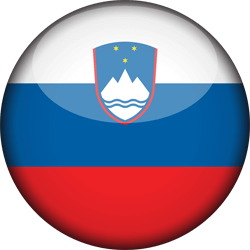 JSI – Institut Jozef Stefan, Slovenia
JSI – Institut Jozef Stefan, Slovenia

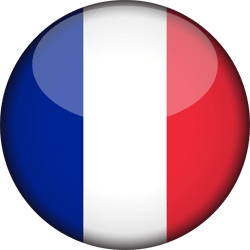 ANSES – French Agency for Food, Environmental and Occupational Health & Safety, France
ANSES – French Agency for Food, Environmental and Occupational Health & Safety, France
 HHF – Hellenic Health Foundation, Greece
HHF – Hellenic Health Foundation, Greece
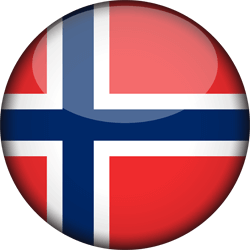 NFSA – The Norwegian Food Safety Authority, Norway
NFSA – The Norwegian Food Safety Authority, Norway
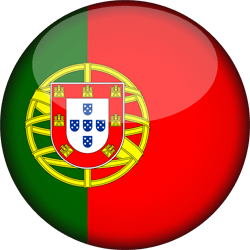
 NFA – Swedish National Food Agency, Sweden
NFA – Swedish National Food Agency, Sweden
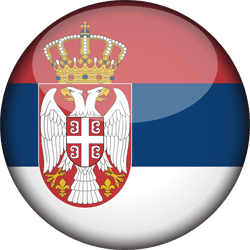 IMR – Institute of Medical Research, University of Belgrade, Republic of Serbia
IMR – Institute of Medical Research, University of Belgrade, Republic of Serbia
 NUBEL – Nutrienten Belgie vzw, Belgium
NUBEL – Nutrienten Belgie vzw, Belgium
 RIVM – Institute of Public Health and the Environment, The Netherlands
RIVM – Institute of Public Health and the Environment, The Netherlands
 BEDCA/University of Cordoba, Spain
BEDCA/University of Cordoba, Spain
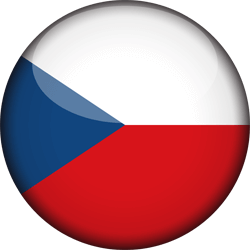 IAEI – Institute of Agricultural Economics and Information, Czech Republic
IAEI – Institute of Agricultural Economics and Information, Czech Republic
 Food Standards Australia New Zealand
Food Standards Australia New Zealand
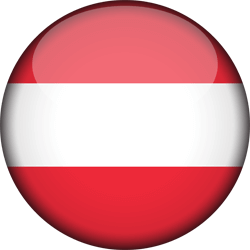 UVI – University of Vienna, Austria
UVI – University of Vienna, Austria
 BIOR – Animal Health and Environment, Latvia
BIOR – Animal Health and Environment, Latvia
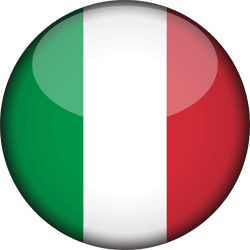
 MRI – Max Rubner Institute, Germany
MRI – Max Rubner Institute, Germany





